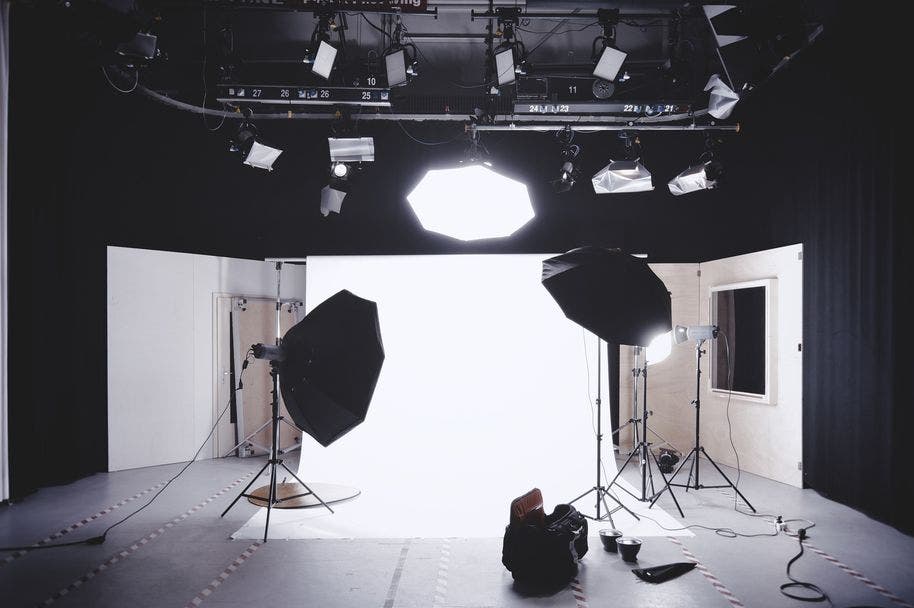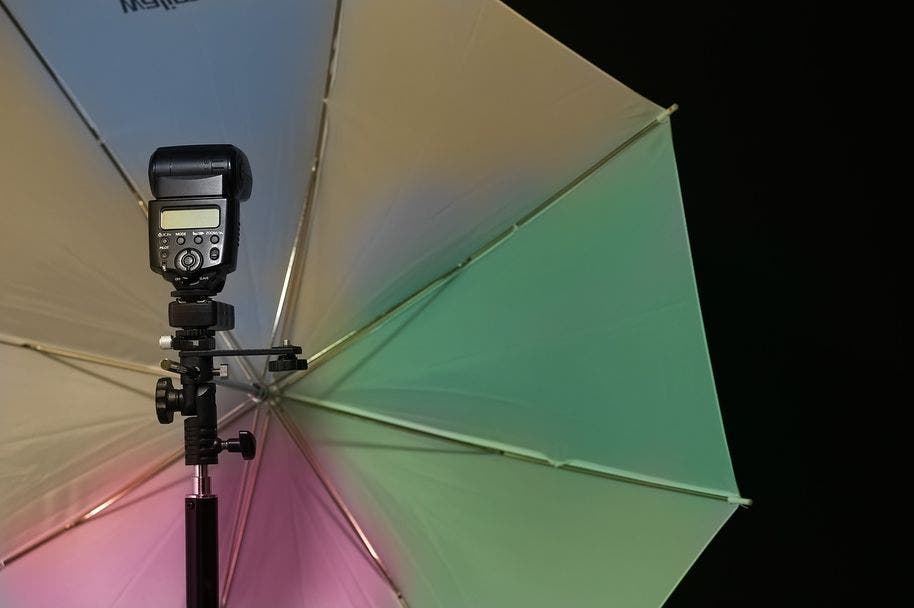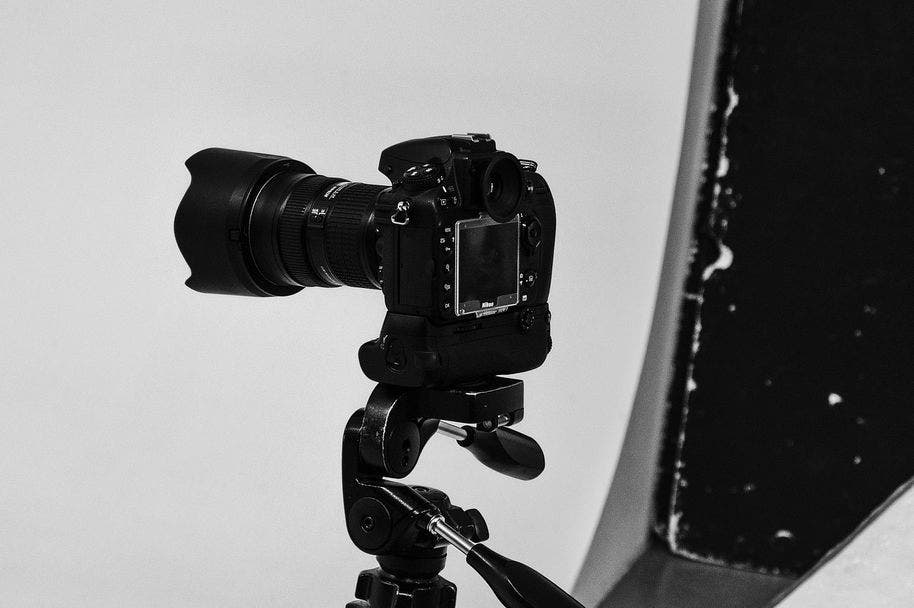
Although environmental photography can produce some stunning results, sometimes you just need a good photography studio to give you far better control over lighting and background.
But when it comes to building your studio, it can be tricky to know what studio equipment you need. While it may be tempting to stock everything, it’s best to start with the essentials and acquire more equipment as you go along.
So aside from the camera and lenses, what are the essential photography studio accessories you need?

Lighting Accessories
The most important function of your photography studio is to be able to control lighting in your photos – from colour and quality to direction and quantity. So, the first thing you’ll want to snag is some studio lighting equipment.
Studio lights
At least one flashgun or speedlight is a necessity – more if you can handle it. Having flashguns allows you to lower the ISO and better control the depth of field in your photos.
With a studio light, you can diffuse light or make it harsher, spread it wide or create a narrow beam, and choose the angle the light comes from.
Normally, you can buy a flash head or strobe as part of your studio flash kit, but you can also buy them separately.
In a typical setup, you may have more than one flash head. There’s normally the primary flash and the slave flash light, which is triggered by the main flash. These days, flash heads can be wireless or triggered with a flashgun transmitter mounted on the hot shoe so you don’t have to worry about lots of cables.
Reflectors to manipulate light
Reflectors are basic and yet an invaluable part of your photography studio. Designed to redirect light from a flash or natural light, reflectors help remove shadows, add drama, and even change the amount and colour of light reflected back.
You can get reflectors in different types and colours to impact the type of lighting you want. Traditional white reflectors soften light while silver reflectors typically brighten it. Gold-tinted reflectors produce warmth while the black sides of your reflectors can block out light altogether.
Reflecting umbrellas for soft, diffused light
Many reflectors are simple sheets or screens, but you can also get umbrellas that provide a large reflecting surface. In a typical setup, the strobe light bounces onto the umbrella’s surface, which reflects the softened light back onto the subject.
As with screen reflectors, reflecting umbrellas come in different styles. Silver-lined umbrellas can focus the light more narrowly while white umbrellas diffuse the light more widely. Once again, gold-tinted umbrellas create warmth.
Shoot-through umbrellas for broad, soft light

A great option for beginners, shoot-through umbrellas are popular among studio photographers and environmental photographers alike. They’re portable, easy to set up, and easier to control than reflecting umbrellas.
Unlike with reflecting umbrellas, with shoot-through umbrellas, you point the light source towards the subject and transmit it through the umbrella.
Translucent umbrellas are set up generally closer to the subject because you do get a bit of excessive light spill, compared to the softboxes we’ll talk about below.
You can often buy translucent and reflecting umbrellas in a kit with a stand and bag.
Softboxes for soft, focused light
Softboxes are square or rectangular and are attached to the front of the strobe, over your light source. Any light bounces off the walls of the softbox and is diffused through a translucent front.
This creates a softer, more focused light on the model. Although they’re often difficult for beginners to master, they give you much greater directional control over your light than an umbrella.
Backdrops for your subjects

It’s common in portrait photography to use a plain backdrop that helps your models stand out. Backdrops are available in a variety of colours, sizes, and materials so you can dictate the style you want in your photos.
Black backdrops can produce high-impacting shots by isolating your subject, but they can be overly dramatic. White is often more popular, helping to soften the photo.
Muslin is perhaps the most popular backdrop. It’s lightweight, portable, and comes in a range of sizes. Canvas is durable and offers brilliant quality, but is more expensive and heavier.
Many photographers use seamless paper because it offers a crisp, clean background, but don’t forget, it’s still paper so it’s not at all portable!
Grips and stands to hold everything
Of course, with reflectors, umbrellas, strobes, light modifiers, and backdrops, you’ll need grips and stands to support them and keep them in place.
Stands vary in length, size, and price, but most come with an adjustable height so you can get the most out of them.
Lightweight stands generally come with an air-shock feature which protects your light if you accidentally knock the stand. Some photographers attach sandbags to weight the stand and better stabilise the whole system.
C-stands are more heavy duty and stable than lightweight stands, making them popular for outdoors shoots when there’s a gust.
C-stands also come with attachments so you can mount reflectors, flags, modifiers, scrims, and more to the stand and rotate them to the angle you need. They’re also used to hold your backdrops.
Ready to build your first photography studio? Browse our range of lighting equipment and accessories and get professional with your photography today!
